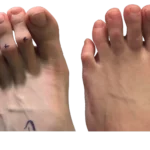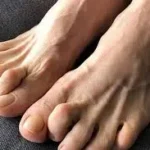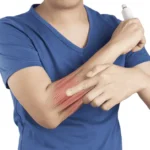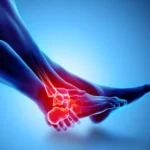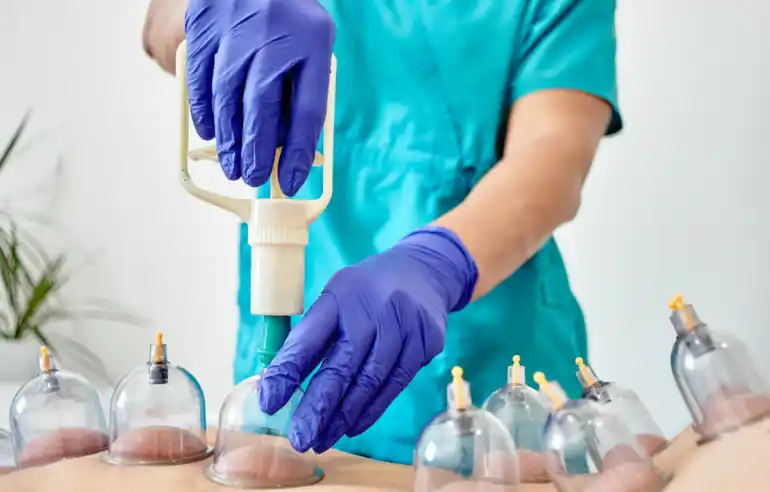Overview
The transverse abdominis (TrA) is one of the most important core muscles of the human body. Often called the “corset muscle,” it wraps horizontally around the abdomen, providing stability to the spine, pelvis, and trunk. A transverse abdominis strain occurs when the muscle fibers of this deep abdominal muscle are overstretched or torn, leading to pain, weakness, and reduced core stability.
Unlike surface muscles such as the rectus abdominis or obliques, the transverse abdominis lies deep within the abdominal wall. It functions primarily to stabilize the lumbar spine and pelvis during movement, breathing, and posture control. When this muscle is strained, patients often experience difficulty performing daily tasks that require bending, lifting, or even deep breathing.
At DMPhysios, a leading physiotherapy clinic in Noida specializing in spine and sports conditions, patients with transverse abdominis strain receive comprehensive, patient-centered rehabilitation to restore full function, prevent recurrence, and rebuild core strength.
Symptoms
The symptoms of transverse abdominis strain can vary depending on the severity of the injury, but typically include:
- Localized pain in the lower abdomen or side of the trunk.
- Tenderness on palpation of the abdominal wall.
- Pain during movement, particularly twisting, bending, or coughing.
- Difficulty maintaining core stability while standing or sitting.
- Swelling or mild bruising in more severe cases.
- Weakness during exercises involving the core or pelvis.
- Pain during deep breathing or sneezing due to activation of the TrA muscle.
Since the transverse abdominis supports spinal stability, weakness or strain here can also contribute to lower back pain or postural issues. Early assessment and treatment at DMPhysios are vital for preventing chronic dysfunction.
Types of Transverse Abdominis Strain
While there are no formal “types” of transverse abdominis strain, clinicians typically classify them based on the severity or grade of muscle fiber damage:
- Grade I (Mild):
Minimal muscle fiber damage, slight discomfort, mild tenderness, and little to no loss of strength. Healing occurs within 1–2 weeks with proper care. - Grade II (Moderate):
Partial tearing of muscle fibers. Pain is more noticeable, especially during movement, with moderate loss of strength and mobility. Healing takes about 3–6 weeks. - Grade III (Severe):
Complete rupture or significant tear of the transverse abdominis muscle. Pain may be sharp and disabling, often requiring extended rehabilitation.
Understanding the grade of injury helps physiotherapists at DMPhysios create a personalized treatment plan to promote optimal healing and prevent reinjury.
Causes
A transverse abdominis strain can occur due to several factors involving sudden or repetitive stress to the core. Common causes include:
- Improper lifting technique – lifting heavy weights without proper bracing of the core.
- Sudden twisting or rotation of the trunk.
- Overuse during sports such as tennis, golf, cricket, or gymnastics.
- Direct trauma to the abdomen.
- Weak core muscles, making the transverse abdominis more susceptible to overload.
- Poor posture or prolonged sitting leading to deconditioning.
- Coughing bouts or respiratory infections causing repetitive strain.
- Rapid or improper exercise progression, especially in abdominal workouts or Pilates.
Athletes and individuals engaged in physically demanding work are at greater risk of transverse abdominis strain, especially if proper warm-up and strengthening routines are neglected.
Risk Factors
Certain factors increase susceptibility to transverse abdominis strain, including:
- Weak core stability
- Previous abdominal or lumbar injuries
- Poor exercise technique
- Lack of flexibility
- Sudden increase in activity level
- Sedentary lifestyle
- Obesity
- Age-related muscle weakness
At DMPhysios, physiotherapists perform detailed biomechanical assessments to identify these risk factors and tailor rehabilitation programs to the individual’s specific needs.
Treatment
The treatment of transverse abdominis strain depends on the severity of the injury but typically includes three phases: acute care, progressive rehabilitation, and return to activity.
1. Acute Phase (0–7 days)
- Rest and protection: Avoid activities that cause pain or strain on the abdomen.
- Ice therapy: Apply ice packs for 15–20 minutes several times a day to reduce inflammation.
- Compression: Gentle abdominal support may help decrease swelling.
- Pain management: Use prescribed anti-inflammatory medications if advised by a doctor.
- Gentle breathing exercises: Helps maintain activation of the transverse abdominis without strain.
2. Subacute Phase (1–3 weeks)
- Gentle stretching and mobility exercises: Gradual reactivation of the core muscles.
- Isometric contractions: Begin gentle transverse abdominis activation exercises (e.g., drawing-in maneuver).
- Manual therapy: At DMPhysios, therapists may use myofascial release or soft tissue techniques to reduce tension.
- Gradual strengthening: Slowly increase muscle endurance through guided exercises.
3. Functional Phase (3–6 weeks and beyond)
- Progressive strengthening: Focus on trunk stability, posture correction, and movement control.
- Sport-specific training: For athletes, restore dynamic core control.
- Postural retraining: Strengthen deep core muscles and improve alignment.
- Education and prevention strategies: To minimize recurrence.
At DMPhysios, each phase is supervised by trained physiotherapists who closely monitor patient progress to ensure safe recovery from transverse abdominis strain.
Physiotherapy Treatment
Rehabilitation plays the most crucial role in the recovery process. The physiotherapy team at DMPhysios in Noida uses a patient-centered and evidence-based approach to restore function, prevent recurrence, and strengthen the core effectively.
1. Initial Assessment and Diagnosis
A detailed clinical examination is done to:
- Identify pain location and severity.
- Evaluate posture and breathing mechanics.
- Test transverse abdominis activation using palpation and movement control assessments.
- Rule out other abdominal or lumbar pathologies.
2. Manual Therapy
Techniques may include:
- Soft tissue mobilization to relieve muscle tension.
- Myofascial release to improve flexibility.
- Trigger point therapy for localized pain.
- Diaphragmatic release if breathing mechanics are impaired.
3. Core Activation and Strengthening Exercises
The rehabilitation program progresses through stages:
Stage 1: Basic Core Activation
- Abdominal drawing-in maneuver (ADIM): Patient lies supine, gently drawing the belly button toward the spine without moving the pelvis. This directly targets the transverse abdominis.
- Pelvic tilts and diaphragmatic breathing to coordinate core engagement.
Stage 2: Stability and Endurance
- Dead bug exercises
- Modified plank holds
- Heel slides with TrA activation
- Bridging with core control
Stage 3: Dynamic Control
- Side planks
- Bird-dog exercise
- Cable or resistance band rotations
- Standing functional movements (e.g., lunges, squats with core bracing)
Stage 4: Sport-Specific / Return to Activity
- Integrate transverse abdominis activation into daily or athletic movements.
- Functional retraining for balance, coordination, and lifting mechanics.
Each progression at DMPhysios is tailored to the individual’s pain tolerance and functional capacity, ensuring safe and sustainable recovery.
4. Modalities
Physiotherapists at DMPhysios may use:
- Ultrasound therapy for pain reduction.
- TENS (Transcutaneous Electrical Nerve Stimulation) for pain relief.
- Heat therapy in later stages to improve blood flow.
5. Postural and Ergonomic Training
Improper posture can overwork or weaken the transverse abdominis. Therefore, correction of sitting, standing, and lifting postures is an essential component of the treatment.
6. Breathing and Coordination Exercises
Since the transverse abdominis assists in exhalation, physiotherapists integrate diaphragmatic breathing and core coordination drills to improve functional breathing patterns and trunk stability.
Prevention
Preventing transverse abdominis strain involves maintaining a strong, flexible, and balanced core. Effective preventive strategies include:
- Core strengthening – Regularly perform deep abdominal exercises focusing on TrA activation.
- Proper warm-up before workouts or sports.
- Correct lifting mechanics – Always brace your core during lifting or twisting.
- Gradual exercise progression – Avoid sudden intensity increases.
- Postural awareness – Maintain good alignment during sitting and standing.
- Regular physiotherapy assessments – Clinics like DMPhysios offer preventive programs for athletes and office workers to maintain spine and core health.
Conclusion
A transverse abdominis strain may seem like a minor core injury, but its impact on spinal stability and overall movement can be significant. Timely diagnosis, guided rehabilitation, and proper strengthening are key to complete recovery and preventing chronic pain or re-injury.
At DMPhysios, Noida’s trusted physiotherapy clinic for spine and sports conditions, patients receive a comprehensive, patient-centered approach that combines advanced techniques, core re-education, and functional restoration. Whether you are an athlete, fitness enthusiast, or office worker, DMPhysios ensures you regain strength, stability, and confidence in every movement.
If you’re experiencing abdominal or core pain and suspect a transverse abdominis strain, don’t wait, early assessment and rehabilitation are crucial.
Visit DMPhysios in Noida today for expert diagnosis and personalized recovery programs designed to help you move pain-free and strong again.



